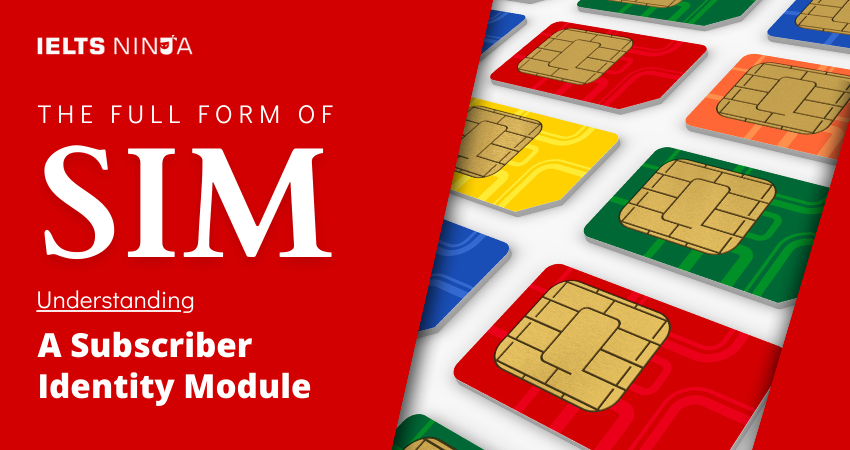In the realm of telecommunications and mobile technology, acronyms often represent essential components and concepts that underpin the functioning of mobile devices and networks. One such acronym that holds significant importance in the world of mobile communication is “SIM.” SIM stands for “Subscriber Identity Module.” In this article, we will delve into the full form of SIM, समझना its purpose, functions, and its critical role in connecting mobile devices to cellular networks.
What Does SIM Stand For?
SIM stands for “Subscriber Identity Module”. यह है a small, removable card that contains essential information and data needed to connect a mobile device to a cellular network and make calls, send texts, and access mobile data services.
Understanding SIM (Subscriber Identity Module)
A Subscriber Identity Module (SIM) card is a fundamental component of mobile communication technology. It serves as the link between a mobile device, such as a smartphone or tablet, and the cellular network operated by a mobile service provider.
Key Details and Features of SIM
Identity Information:
The SIM card contains critical identity information, including a unique serial number (ICCID), the International Mobile Subscriber Identity (IMSI), and a secret authentication key (Ki).
Authentication:
When a mobile device is powered on or connected to the network, the SIM card is authenticated by the cellular network. This process ensures that the device is authorized to use the network services.
Storage:
SIM cards can store contact information, text messages, and other user-specific data. They may also have a small amount of memory for saving text messages and phonebook contacts.
Network Access:
The SIM card plays a central role in granting access to the cellular network. It authenticates the user, assigns a phone number, and allows access to voice and data services.
User Portability:
SIM cards are removable and transferable between compatible devices. This feature enables users to switch devices without changing their phone number or network account.
PIN and PUK Codes:
SIM cards are protected by Personal Identification Number (PIN) codes. If a PIN is entered incorrectly multiple times, a Personal Unblocking Key (PUK) code is required to unlock the SIM card.
Mobile Data Services:
SIM cards enable mobile data services, including internet access, by providing the necessary credentials for the device to connect to the mobile data network.
International Roaming:
SIM cards can be used internationally, allowing users to make calls, send texts, and access data services while traveling abroad. However, international roaming may incur additional charges.
Types of SIM Cards
There are several types of SIM cards, including:
- Standard SIM: This is the largest SIM card size and was commonly used in older mobile devices.
- Micro SIM: Smaller than a standard SIM, it was popular in older smartphones.
- Nano SIM: The smallest SIM card size, commonly used in modern smartphones and tablets.
- eSIM: An embedded SIM, which is built into some newer devices and can be activated remotely without a physical card.
यह भी पढ़ें: सर्वश्रेष्ठ ऑनलाइन आईईएलटीएस कोचिंग एवं प्रशिक्षण अकादमी
Importance of SIM
The SIM card is the linchpin that enables mobile devices to connect to cellular networks, access network services, and communicate with other devices. It plays a critical role in ensuring secure and authorized access to mobile networks.
निष्कर्ष
In conclusion, the Subscriber Identity Module (SIM) is a vital component of mobile communication technology, serving as the key that connects mobile devices to cellular networks. It stores critical identity information, grants access to network services, and facilitates secure and portable mobile communication. As you encounter the abbreviation “SIM” in discussions related to mobile phones and telecommunications, remember that it signifies the heart of mobile connectivity and communication.








